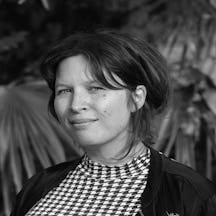Distracted by daydreams for up to ten hours a day, Laura Grace Simpkins became desperate to understand more and, ultimately, stop. She discovered burgeoning research into “maladaptive daydreaming”, and communities of maladaptive daydreamers online. But could it really be true that women, non-binary and trans people daydream more than men, or are investigations into excessive daydreaming being skewed by persistent gender myths?
The phrase “eating lotus” was used metaphorically by ancient Greek poets to mean being ‘forgetful’ or ‘unmindful’. In Homer’s epic, the ‘Odyssey’, the lotus-eaters are a tribe who do nothing but consume the aquatic lily’s petals and daydream their days away. Odysseus has to wrestle two of his crew back to his ships, the sugary taste of lotus still coating their lips. They do not want to leave.
I’ve been a lotus-eater since childhood. What seeded then and budded during school blossomed majestic, monstrous flowers at university. Forget windswept sandy beaches, sparkling wine-dark sea, and plentiful bowls of petals: at my worst, during my master’s, I would sit on my bed in my basement room wrapped up in blankets and stare at a wall, scratching my head or chewing my teeth as I daydreamed for up to ten hours a day.
During that phase of my life, my excessive daydreaming distracted me from my work. It also ruined my relationships and stopped me from looking after myself. Halfway through my degree I had to leave the university, and I completed my studies from home. There were many reasons why I decided to go – but my out-of-control daydreaming was certainly a sizeable factor.
Even when I moved in with my parents, the lure of my daydreams was hard to ignore. I daydreamed just as much, if not more so, than I had during my master’s, and it was pointed out to me that when I do, I can be scary to be around. I crawl into the cinema of myself and dim the lights – for hours on end. I became desperate to put a stop to it.
The cinema of myself.
Discovering daydreamers like me
I wondered if anyone else had experienced something similar. It wasn’t long before I stumbled across “maladaptive daydreaming”, or MD for short. The term was coined by Eli Somer, a clinical psychologist from the University of Haifa, Israel, in his 2002 article, ‘Maladaptive Daydreaming: A Qualitative Inquiry’.
In the article, Somer claims that, although up to 96 per cent of “presumably normal” adults engage with some form of daily daydreaming, there has been a “lack of serious medical interest in pathologically elaborate or abnormal extensive daydreaming”.
Somer proposes maladaptive daydreaming to account for when ordinary daydreaming tips into ‘disordered’ daydreaming, defining it as an “extensive fantasy activity that replaces human interaction and/or interferes with academic, interpersonal, or vocational functioning”. I identified with what Somer was outlining and I felt relieved. I wasn’t alone. There was a name for what I was doing.
Somer was not the first to point out the lacuna in excessive daydreaming research, but his 2002 article, a modest interview-based study of only six patients in the trauma clinic he practised in, certainly captured researchers’ imaginations.
There is now an International Consortium for Maladaptive Daydreaming Research (ICMDR), an informal network of scientists established by Somer in 2017. The consortium’s projects have included publishing papers in peer-reviewed journals, developing maladaptive daydreaming scales (MDS) for both adults and children, and setting out diagnostic criteria for the condition.
Currently, researchers debate its aetiology, or cause. They tend to agree that maladaptive daydreaming is not a manifestation of psychosis, but disagree on whether it is a dissociative disorder, behavioural addiction or obsessive-compulsive disorder, or whether it is a product of trauma, anxiety or depression. In his 2002 article, Somer concludes that maladaptive daydreaming could be a mental illness in its own right.
Searching for official recognition
Maladaptive daydreaming has resonated with those, like me, who see themselves reflected by Somer’s clinical observations, and it has steadily garnered a mass of online support. Communities of self-identified ‘MD-ers’ on Facebook and Reddit, as well as dedicated platforms such as website Wild Minds, have since flourished.
A friend tipped me off about compilations of TikTok videos I could watch on YouTube of people (often humorously) re-enacting their maladaptive daydreaming, telling viewers about their imaginative world-building, and explaining what MD is in their own words. Watching these videos, I felt at home. But, also, something troubled me.
TikTok MD-ers.
TikTok MD-ers appear to regurgitate the medical terminology put forward by maladaptive daydreaming research, without always disclaiming that maladaptive daydreaming is a proposed disorder, not a proven one.
In fact, exactly 20 years on from Somer’s initial article, maladaptive daydreaming is not considered a psychiatric diagnosis. Aside from a lack of adequate evidence, critics are concerned about the pathologisation of an entirely human state of consciousness: ordinary daydreaming. The British Psychological Society says it “does not have a position on maladaptive daydreaming as it is not an officially recognised disorder”.
The looping logic of this argument – maladaptive daydreaming cannot be a diagnosis until the research is done, but the research cannot be done until maladaptive daydreaming is a diagnosis – frustrates many MD-ers who want help. I am sympathetic, being one of them. From the literature I’ve read, I know I’d be considered an excessive excessive daydreamer, but I can appreciate where the wariness from the ‘psy-sciences’ is coming from.
Maladaptive daydreaming cannot be a diagnosis until the research is done, but the research cannot be done until maladaptive daydreaming is a diagnosis.
In 2014, maladaptive daydreamers petitioned the UK government. They wanted maladaptive daydreaming to be recognised as a mental health disorder and for support for “debilitating excessive daydreaming to be available through the NHS”. They entreat: “Psychologists need to be aware of the problem and realise how widespread it actually is.” The petition was rejected because it wasn’t about something Parliament was directly responsible for.
In an article from 2018, Somer writes that the grassroots activism that led to the petitioning of the UK government challenges “the medical gaze” (Michel Foucault’s expression for how medical professionals are in control of what constitutes pain, suffering and, ultimately, illness). It does so, Somer argues, because it is activism led by and for people who describe themselves as MD-ers. He calls this activism a “micro-political process of medicalization – the bottom-up reification of MD”.
But does this lobbying put power back into the hands of the patient, as Somer claims? Do we really understand the implications of proposing maladaptive daydreaming as an illness?
While I was watching tens, if not hundreds, of TikTok videos, I noticed that almost all of them seemed to be authored by women, trans or non-binary people. Then I went and looked again through the research articles. The overwhelming majority of subjects interviewed, questioned, and tested as part of those studies identify as women – often up to 80 per cent of the participants.
In another article published in 2018, Somer and his associates acknowledge that their sample is mostly comprised of women, but claim that it may be indicative of the MD population, as “female overrepresentation is characteristic of psychiatric samples in general, especially vis-à-vis internalizing – rather than externalizing – mental health issues”.
This almost throwaway comment intrigued me. Why do more women feature in studies of ‘internalised’ psychiatric illnesses than men? Is it just because men aren’t coming forward? Or do women actually daydream more?
The feminisation of daydreaming
In her book ‘Unwell Women’, feminist cultural historian Elinor Cleghorn asserts that medicine has inherited a gender problem: “Medical myths about gender roles and behaviours, constructed as facts before medicine became an evidence-based science, have resonated perniciously.” Today, she writes, gender myths are ingrained as biases.
Daydreaming or meditation.
Ever since Odysseus’s men partook of the lotus, daydreaming has been negatively feminised. When the crew members join in with the tribe’s lotus lunch, they take themselves out of the sphere of male labour and reduce themselves to female domesticity and ‘unmindfulness’. In another mythological lotus story, that of the Buddha transfixed upon its petals, the lotus is a vehicle for meditation: a practice associated with male spiritual self-discovery.
Meditation, what men do, is a virtue. Daydreaming, what women or emasculated men do, is a vice.
It’s worth pointing out that proposed treatments for maladaptive daydreaming include cognitive behavioural approaches, drugs that modify serotonin levels, and meditation. Again, that ancient dichotomy: meditation, good; daydreaming, bad.
Ever since Odysseus’s men partook of the lotus, daydreaming has been negatively feminised.
By shrugging off the overrepresentation of women as “to be expected”, maladaptive daydreaming researchers run the risk of allowing gender myths to tincture their work. The negative rhetoric surrounding daydreaming as a feminised activity perhaps accounts for why the benefits of excessive daydreaming (anecdotally these include being more creative and self-aware) are so rarely investigated.
It also explains why, when the positives of maladaptive daydreaming are acknowledged, they continue to be downplayed by scientific narratives. Many TikTok creators, on the other hand, do well at celebrating the positives.
If MD-ers today have as much “bottom-up power” as Somer insists we do, we should undoubtedly be asking the most pressing question absent from maladaptive daydreaming research: why are so many of us women, trans or non-binary? Is it possible that maladaptive daydreaming isn’t so much an individual ‘illness’ but rather a widespread cultural response to being in a marginalised position in the world?
By calling attention to the gender myths of excessive daydreaming, my intention is neither to disenfranchise the academic work being carried out in this field, nor to delegitimise the efforts of online maladaptive daydreaming communities, of those who have found peace after washing up on an island of lotus eaters just like them.
Instead, I want to encourage those of us who identify with maladaptive daydreaming, before lobbying for its installation as an official psychiatric diagnosis, to seriously contemplate who this phenomenon affects, and the wider societal issues as to why this might be.
About the contributors
Laura Grace Simpkins
Laura Grace Simpkins writes and performs about herself, madness and death. Her writing has been published by the Guardian, New Scientist and the British Medical Journal’s Medical Humanities, as well as broadcast on BBC Radio. She is currently working on her first book.
Tanya Cooper
Tanya is an Australian artist who has spent the last 14 years illustrating for publications around the globe. She loves mixing the old and new in her collage work, giving fresh meaning to existing images, collecting unexpected items together to generate an interesting narrative. She likes to have fun with her work, injecting bright colour and a bit of humour wherever she can.


